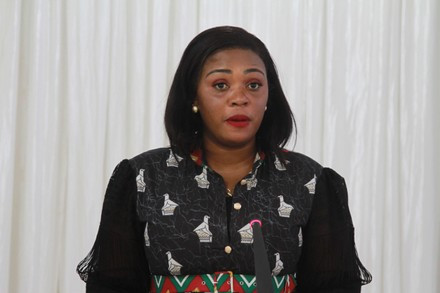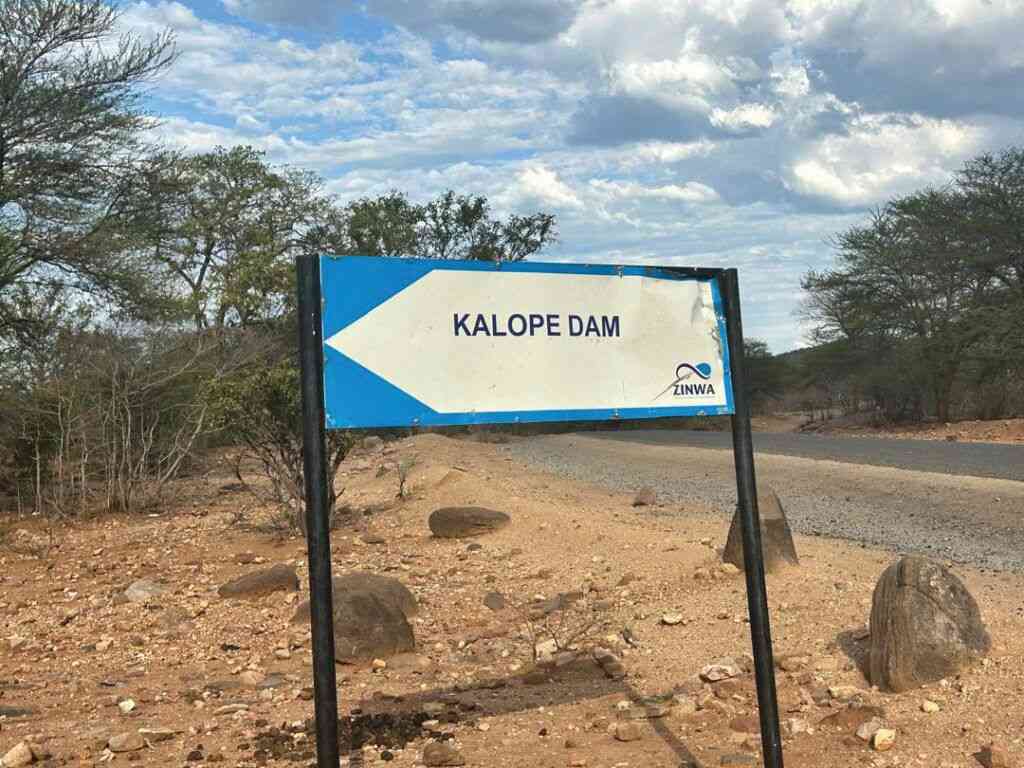
LINNET Mapuranga (27), a mother of three, noticed her 7-month-old’s upset stomach first. A few days later, her three-year-old and nine-year-old had similar symptoms and by the fourth day, everyone in her household was sick.
“I knew something was wrong. We went to the local clinic and it was discovered that we all had cholera,” she said.
Mapuranga, who lives in a house with five other families in Glen View, a high-density suburb in Harare, Zimbabwe’s capital, said in June 2023, 10 of the 15 people who live there had cholera.
“My baby could not breastfeed. He was dehydrated and his eyes were visibly shrunken and lifeless. I was stressed and I could not think properly. My whole family was sick and I thought I was going to lose them all,” she said.
Periodically, Zimbabwe is hit by cyclones, droughts and floods, owing to climate change and its effects on temperature and rainfall patterns over time, according to research by the United Nations Educational, Scientific and Cultural Organisation.
The frequency of these floods and droughts is rising, with their effects linked to repeated cholera outbreaks. In February, the country was hit by Cyclone Freddy, which caused flooding and yet another cholera outbreak.
Since 1998, Zimbabwe has recorded yearly cholera outbreaks, according to the World Health Organisation regional office for Africa. Prior to that, outbreaks were on a five- to seven-year cycle.
Cholera outbreaks follow a fairly cyclical pattern that coincides with the rainy season. In recent decades, there have been two large outbreaks in Zimbabwe: One from 2008 to 2009, which resulted in over 100 000 cases and over 4 000 deaths, and another from 2018 to 2019, which resulted in 10 000 cases and 69 deaths across the country’s cholera hotspots. This year, the country experienced yet another outbreak.
- Mavhunga puts DeMbare into Chibuku quarterfinals
- Bulls to charge into Zimbabwe gold stocks
- Ndiraya concerned as goals dry up
- Letters: How solar power is transforming African farms
Keep Reading
In response, Zimbabwe declared a state of emergency. There have been more than 7 000 instances of cumulative suspected cases thus far, with over 143 suspected cholera deaths.
Climate change and cholera
According to a 2019 study on the effect of climate change on cholera, published in the National Library of Medicine, “There is evidence of a relationship between climatic parameters and the burden of water-borne diseases such as cholera, particularly in undeveloped/developing countries.”
The study said increases or decreases in average rainfall could lead to floods and droughts, which could affect the concentration of bacteria, affecting human health.
A 2017 study on climate change in Zimbabwe in the Journal of Law, Policy and Globalisation found that the main contributor to cholera outbreaks was inadequate sanitation during floods or droughts.
According to an article in Multidisciplinary Digital Publishing Institute, climate change has an indirect impact on water resources, food production systems, population displacement and the prevalence and incidence of infectious diseases.
Globally, cholera is a major public health problem, causing illness to an estimated four million people and over 140 000 deaths annually. In Africa, cholera annually infects 150 000 people, leading to 3 000 deaths in the 17 countries where it is prevalent.
Concilia Mwale (43) said her 12-year-old son had a near-death experience with cholera.
Mwale was away visiting her sick mother when she got a call from her neighbours that her son was not feeling well.
“When I got back, my son had been transferred to a local hospital and he was in a critical condition and because of his condition and cholera infection, I was not allowed to see him,” she said.
The mother of four said she relied on water from her neighbour’s borehole and tests later revealed it was contaminated with sewage.
She said sewage usually flows into the neighbourhood due to burst pipes. When it floods, the contaminated water seeps into wells and boreholes.
Mwale, who has lived in Glen View for over 12 years, said she relied on water from manmade wells for household use, while neighbours’ boreholes provide drinking water.
Nomsa Rambire, 34, who has had typhoid, a waterborne disease similar to cholera, three times, links her woes to contaminated water.
“First, it was in 2014, then the second time in 2019, and this year was the third time, and at all times it was the water that I was drinking that caused the infection.”
At the time she had typhoid, all her family members were infected with cholera.
“We don’t drink tap water and the tap water is erratic in terms of supply. Now, since the cholera outbreak, the water is available, but it looks contaminated with green elements in it. It does not look safe to drink,” she said.
Mwale and Rambire are among the tens of thousands of people who can’t rely on water provided by Harare City Council and find themselves depending on unsafe water sources that worsen with flooding.
Demand for water is outpacing supply
Innocent Ruwende, former spokesperson for the Harare City Council, said council was not producing the required amount of water at its treatment works.
He said, water demand was around 1,2 billion litres per day, “while the capacity was at 780 million litres per day. Actual water provision stands at 420 million litres per day owing to leakages and theft of treated water. Harare’s population has grown and there is need for new water sources.”
Zimbabwe’s population increased by 16,2% between the 2012 census and the most recent, in 2022. It now stands at 15,1 million people, up from 13 million.
Ruwende said temperatures were rising as climate change and heavy rains and droughts were becoming more intense.
According to the Environment, Water and Climate ministry, Zimbabwe’s mean surface temperature has risen by about 0,4 degrees Celsius from 1900 to 2000.
The planet’s average surface temperature has risen by about 2 degrees Fahrenheit (1,1 degrees Celsius), mostly in the past 35 years, states a United Nations report.
“In Harare, rains are expected in October at the earliest, but that has not always been the case. We have been forced at times to decommission Prince Edward water treatment plant and Harava Dam after they dried up,” Ruwende said.
Climate change is causing water shortages
Lisben Chipfunde, head of amenities and environment at Harare City Council, confirms that water shortage, particularly during the 2019-20 rainy season, impacted residents.
Chipfunde said Prince Edward Dam, the source for Prince Edward Waterworks, ran out of water due to drought and Harare City Council had to supply water to the whole of greater Harare from one centre, the Morton Jaffray Waterworks.
“A number of residential areas had to endure prolonged periods without water,” Chipfunde said, “Thereby forcing residents to turn to unprotected and contaminated water sources such as wells and boreholes.”
Chipfunde said the temperature increase had also resulted in heat stress and increased water demand, “which exacerbated an already dire water situation.”
Leonard Unganai is a policy and programme manager with Oxfam, a global movement against poverty, and has worked on various climate change programmes. “One of the areas that is affected worst by climate change is availability of water. If water resources are affected by climate change, then that will in turn affect water supply,” he said.
According to the World Health Organisation, catastrophic events such as floods and cyclones impact infrastructure, weaken healthcare systems and result in disease outbreaks and significant mortalities.
Unganai said it was also important to interrogate whether there was adequate infrastructure for clean water and sanitation services aside from climate change impacts.
Worsening crisis and policies
Rueben Akili, the director of the Combined Harare Residents Association, a non-profit that advocates for effective municipal services and good local administration said people turned to unsafe water sources when climate change affected their water supply.
Akili said when there was an increase in temperatures, water in reservoirs depleted faster, which affected supply. “When we don’t have water supply, communities start to look for water in unprotected sources. At the end of the day, diseases start to erupt,” he said.
According to a research published in 2017 by the International Institute of Science, Technology and Education, Zimbabwe’s climate change policies have not taken into account the projected effects and breadth of climate change. Such effects include more cholera cases and the prevalence of diseases like cholera and malaria in a wider area.
Similarly, an article by Climate Centre, an organisation that works to reduce the impact of climate change, states that not much is being done across the world to eradicate cholera, despite the increase in cases. In 2022, 30 nations reported cholera outbreaks, including in regions where the illness had been eradicated for decades.
Addressing climate change in Zimbabwe
Akili said local authorities needed to be more proactive in addressing climate change and its effects.
“Local authorities need to come up with climate resilient measures to inform the way we respond to issues like climate change. We also need to protect the wetlands, which are the sources of water and look around issues around regreening through planting trees,” he said.
Chipfunde said they were already implementing climate adaptation and mitigation programmes.
“On climate change adaptation, the city is promoting the use of new and renewable sources of energy such as solar projects on city’s clinics and offices; starting solar farms for energy generation; development and implementation of urban resilience; and greening the city through afforestation and reforestation by tree planting.”
But for residents like Mapuranga, the concern persists. She worries that she has not seen her last infection. “Our water supply is erratic, and l believe that’s where our cholera problem lies,” she said.
Rambire looks back at the time her whole household was sick and worries about the future. “I had so much fear, and I thought I was going to die. The city council should ensure that there is regular supply of clean water to minimise these outbreaks.”
This articles was first published by the Global Press Journal











